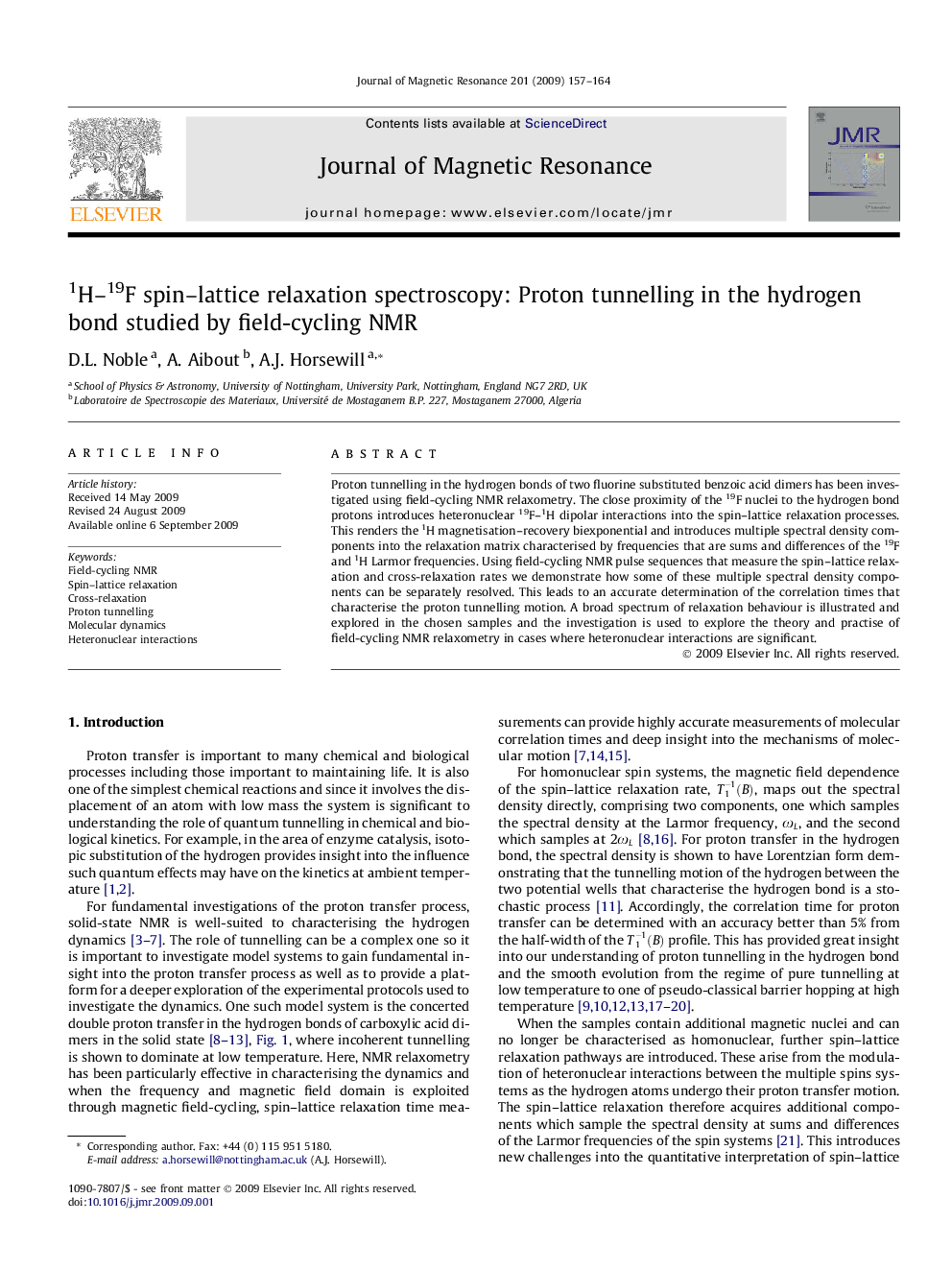| Article ID | Journal | Published Year | Pages | File Type |
|---|---|---|---|---|
| 5406478 | Journal of Magnetic Resonance | 2009 | 8 Pages |
Abstract
Proton tunnelling in the hydrogen bonds of two fluorine substituted benzoic acid dimers has been investigated using field-cycling NMR relaxometry. The close proximity of the 19F nuclei to the hydrogen bond protons introduces heteronuclear 19F-1H dipolar interactions into the spin-lattice relaxation processes. This renders the 1H magnetisation-recovery biexponential and introduces multiple spectral density components into the relaxation matrix characterised by frequencies that are sums and differences of the 19F and 1H Larmor frequencies. Using field-cycling NMR pulse sequences that measure the spin-lattice relaxation and cross-relaxation rates we demonstrate how some of these multiple spectral density components can be separately resolved. This leads to an accurate determination of the correlation times that characterise the proton tunnelling motion. A broad spectrum of relaxation behaviour is illustrated and explored in the chosen samples and the investigation is used to explore the theory and practise of field-cycling NMR relaxometry in cases where heteronuclear interactions are significant.
Keywords
Related Topics
Physical Sciences and Engineering
Chemistry
Physical and Theoretical Chemistry
Authors
D.L. Noble, A. Aibout, A.J. Horsewill,
